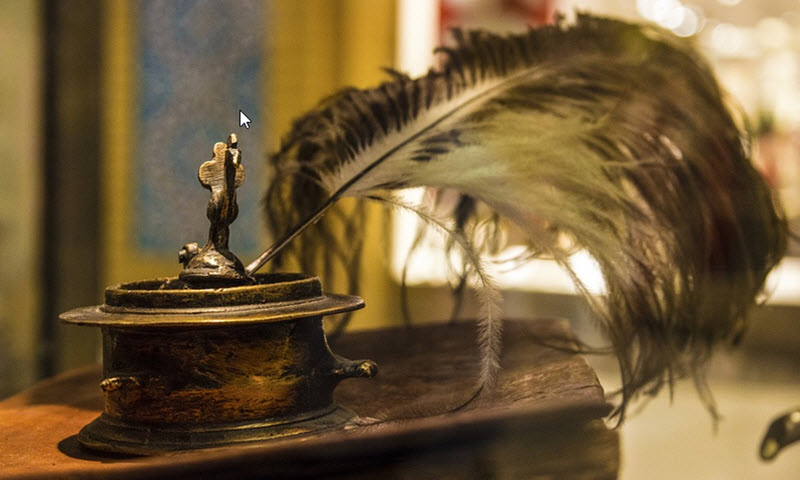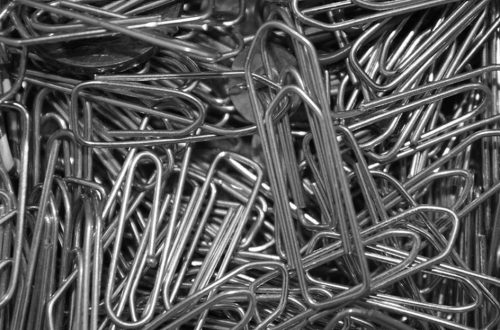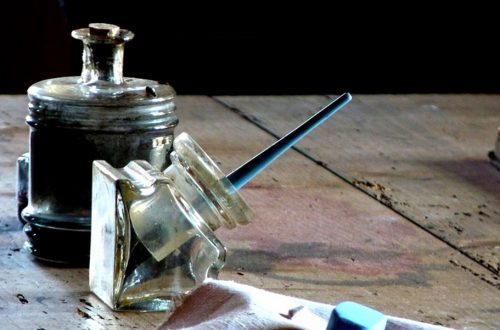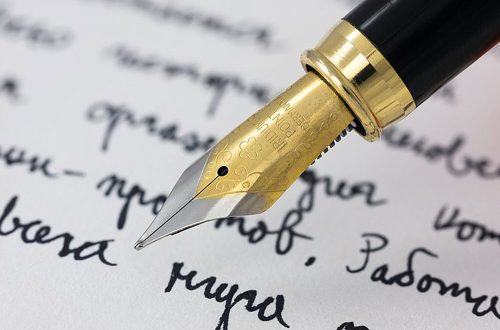Contents
A quill is a writing tool made from a bird´s flight feather. The primary wing-feather of a large bird, such as a goose, is considered best for making a quill, and it should ideally be a feather that the bird released while going through its natural moult.
The shaft of a flight feather is naturally hollow (the shaft is called calamus), so hollowing it out is not necessary.
Just like other dip pens, a quill has no large internal reservoir for ink that is filled up from the bottom of the pen, and it must therefore be regularly dipped into an inkwell during writing.
A quill has an open end and a closed end, and you write with the open (and sharpened) end, which is also the end you put into the inkwell. When you dip quill into an inkwell, ink will flow into the calamus due to capillary action.
Can I buy a quill today?
Yes. While writing with quills is unusual today, there are producers who make quills for hobbyists, e.g. people specializing in a type calligraphy written with quills.
Before you order a quill, make sure its design is in accordance with your wishes. Some quills sold today are fitted with metal nibs, making writing with them more similar to using a standard metal-nibbed pen than writing with than old-school quills.
In addition to being used by hobbyists, quills are also produce for professional, ritual and traditional purposes. When the U.S. Supreme Court is in session, 20 goose-quills are placed at the four counsel tables, a tradition dating back to the early days of this court.
Jewish scribes writing Torah Scrolls typically use quills or reed pens.
When you decide to use a quill pen, write on something that is suitable for quill writing. Some modern wood pulp papers are rumoured to wear down the quill fast, although this seems to also have something to do with technique.

Making a quill
The process of turning it into a quill involves curing the shaft to harden it, and then using a small cutting tool to carve its tip into a nib. The nib needs to have a sharp point, and a slit leading to that point.
The old method for making a quill involves stripping the barbs completely on the trailing edge. Later, it became fashionable to only strip it partially and leave some barbs as decoration at the non-writing end. The fully-plumed quill is mostly a Hollywood invention and was not a common writing tool back in the days when quills were actually used.
Maintaining a quill
In a correctly prepared and correctly used quill, the slit will not widen with use, but you will still need to sharpen the quill now and then and this will gradually make the quill shorter until it is too short to use anymore.
Traditionally, a person using a quill would also own a special knife suitable for cutting and sharpening (”dressing”) the quill – a pen knife. Even though quills are uncommon today, this type of small knife is still known as a pen knife in English due to its former association with writing tools. It should be noted though that modern pen knives tend to have two flat sides, while old-style pen knives are flat on one side and convex on the other to facilitate the round cuts utilized to correctly shape the quill.
Birds
The best feather to use is one that fulfils the following requirements:
- Be a primary flight-feather
- Come from a large enough bird, such as goose or swan
- Be shed naturally as a part of the bird´s moult
Historically, the goose was the most common source of quills, but feathers from other birds were also used, such as swan (more expensive than goose, but popular for larger lettering), crow (for fine work, such as accounting), eagle, hawk, and turkey.
Trivia: U.S. President Thomas Jefferson raised geese at Monticello because he needed a lot of quills.






